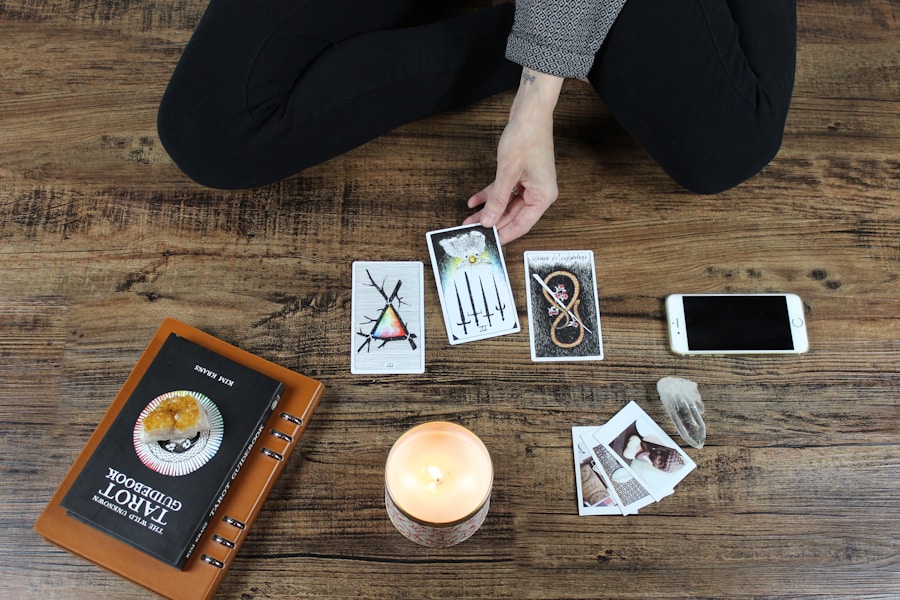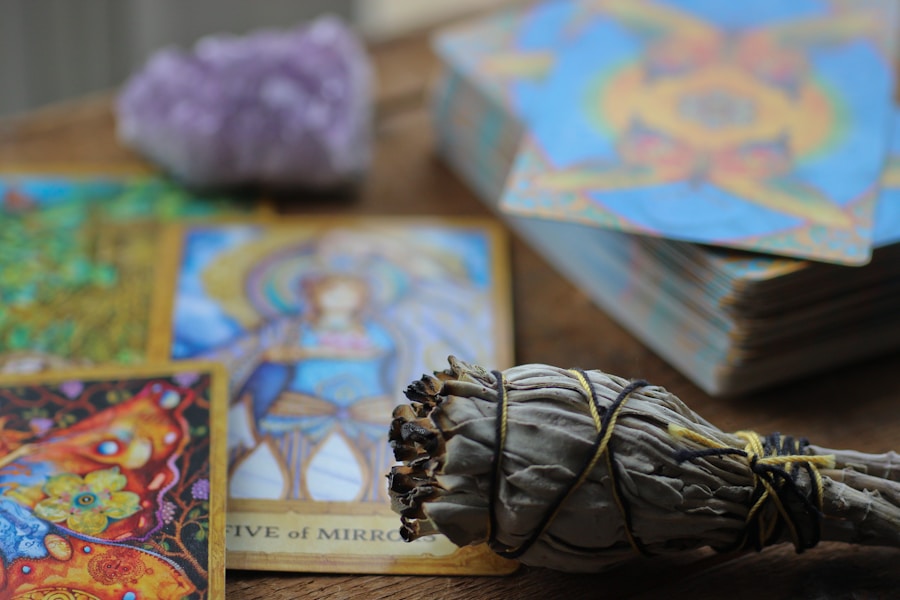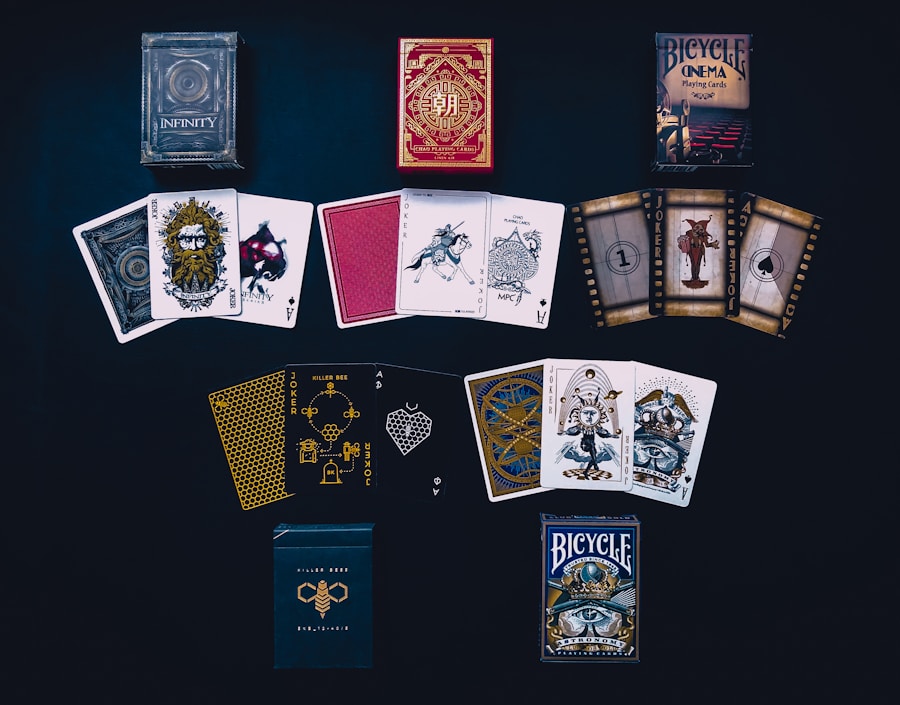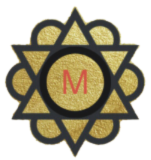
Tarot decks are a fascinating tool for divination, self-reflection, and personal growth. At their core, a traditional tarot deck consists of 78 cards divided into two main sections: the Major Arcana and the Minor Arcana. The Major Arcana comprises 22 cards, each representing significant life themes, spiritual lessons, and archetypal energies.
Cards such as The Fool, The Magician, and The World encapsulate profound concepts that resonate with the human experience. The Minor Arcana, on the other hand, consists of 56 cards divided into four suits: Cups, Pentacles, Swords, and Wands. Each suit corresponds to different aspects of life—emotions, material matters, intellect, and creativity, respectively.
Understanding the structure of a tarot deck is essential for anyone looking to delve into this mystical practice. Each card carries its own symbolism and meaning, which can vary depending on the context of a reading. For instance, The Tower card often signifies upheaval or sudden change, while The Sun represents joy and success.
Tarot readings can be approached in various ways, from simple three-card spreads to more complex layouts like the Celtic Cross. Each method offers unique insights and perspectives, allowing individuals to explore their questions and concerns in depth. As one becomes more familiar with the cards and their meanings, the ability to interpret them intuitively grows, leading to richer and more meaningful readings.
Key Takeaways
- Tarot decks consist of 78 cards, including 22 major arcana and 56 minor arcana cards, each with its own symbolism and meaning.
- When choosing a tarot deck, it’s important to find one that speaks to you on a personal level and resonates with your energy and intuition.
- The artwork and imagery on tarot cards can greatly impact your connection to the deck, so it’s important to choose a deck with visuals that resonate with you.
- Trust your intuition when selecting a tarot deck, as the right deck will feel like an extension of yourself and will enhance your readings.
- There are various types of tarot decks, such as traditional Rider-Waite-Smith decks, themed decks, and oracle decks, each offering unique interpretations and symbolism. Seeking recommendations and reviews from others can help you find the right deck for you.
Finding a Deck that Resonates with You
Choosing a tarot deck is a deeply personal journey that reflects one’s individual tastes, beliefs, and spiritual inclinations.
A good starting point is to consider what you hope to achieve through your tarot practice.
Are you seeking guidance for personal development, or are you interested in using tarot for professional readings? Understanding your intentions can help narrow down your options. When exploring different decks, it’s essential to pay attention to how each one makes you feel.
Some individuals may be drawn to traditional decks like the Rider-Waite-Smith due to its historical significance and classic imagery. Others might prefer more contemporary or themed decks that align with their personal interests or aesthetic preferences. For example, a deck inspired by nature may appeal to someone who finds solace in the outdoors, while a deck featuring mythological themes might resonate with those who have a passion for storytelling and ancient cultures.
Ultimately, the right deck should evoke a sense of connection and excitement, inviting you to engage with it regularly.
Considering the Artwork and Imagery

The artwork and imagery of a tarot deck play a crucial role in how one interacts with the cards. Visual elements can evoke emotions, spark intuition, and enhance understanding of the card meanings. When selecting a deck, it’s important to consider not only the artistic style but also how the imagery aligns with your personal interpretations of the symbols.
Some decks feature intricate illustrations filled with rich symbolism, while others may adopt a minimalist approach that emphasizes clarity and simplicity. For instance, decks like the Wild Unknown Tarot are known for their striking black-and-white illustrations that capture the essence of nature and animal symbolism. This style may resonate with those who appreciate a more organic connection to their readings.
Conversely, decks such as the Light Seer’s Tarot offer vibrant colors and modern interpretations of traditional imagery, appealing to those who prefer a contemporary aesthetic. The choice of artwork can significantly influence your reading experience; therefore, it’s worth taking the time to explore various styles before making a decision.
Choosing a Deck Based on Your Intuition and Connection
Intuition plays a vital role in selecting a tarot deck that feels right for you. Often, individuals find themselves inexplicably drawn to certain decks without fully understanding why. This instinctual attraction can be attributed to the energy that resonates with your personal journey or spiritual path.
When browsing through decks, allow yourself to be guided by your feelings rather than solely relying on external opinions or trends. One effective way to gauge your connection with a deck is to handle it physically. If possible, visit a local metaphysical shop or tarot store where you can flip through the cards and experience their energy firsthand.
Do you feel an urge to explore its meanings further? Engaging with the cards in this tactile manner can provide valuable insights into whether a particular deck is meant for you.
Additionally, consider how well you can visualize yourself using the deck in readings—this can be an important indicator of its suitability for your practice.
Exploring Different Types of Tarot Decks
The world of tarot is rich with diversity, offering an array of decks that cater to various interests and philosophies. Traditional tarot decks often adhere closely to established symbolism and meanings found in classic systems like the Rider-Waite-Smith or Thoth Tarot. However, many contemporary artists have created innovative decks that reinterpret these symbols through unique lenses.
For example, the Shadowscapes Tarot combines fantasy art with traditional meanings, inviting users into a whimsical realm where fairies and mythical creatures guide their readings. In addition to artistic variations, there are also themed decks that focus on specific cultures, historical periods, or spiritual practices. The Afro-Brazilian Tarot draws from African traditions and incorporates elements of Candomblé spirituality, offering a distinct perspective on tarot readings that honors its cultural roots.
Similarly, decks like the Tarot of the Divine celebrate global folklore by depicting stories from various cultures around the world. Exploring these different types of decks can deepen your understanding of tarot as a universal tool for insight while also allowing you to connect with specific themes that resonate with your own life experiences.
Seeking Recommendations and Reviews from Others

As you embark on your quest for the perfect tarot deck, seeking recommendations and reviews from fellow practitioners can be incredibly beneficial. Online communities dedicated to tarot often share insights about their favorite decks, providing valuable information about usability, artwork quality, and overall experience. Websites like Aeclectic Tarot offer extensive databases of user reviews that can help you gauge how well a particular deck has resonated with others.
Social media platforms also serve as excellent resources for discovering new decks and connecting with experienced readers who can share their thoughts on various options. Engaging in discussions within tarot groups or forums allows you to ask specific questions about decks you’re considering and receive feedback from those who have firsthand experience using them. Additionally, many tarot enthusiasts create unboxing videos or reviews on platforms like YouTube or Instagram, showcasing the cards’ artwork and discussing their interpretations.
These resources can provide clarity as you navigate through the myriad choices available in the world of tarot. In conclusion, selecting a tarot deck is an intimate process that involves understanding your own needs and preferences while exploring the vast array of options available. By considering factors such as artwork, intuition, and recommendations from others, you can find a deck that not only resonates with you but also enhances your tarot practice in meaningful ways.
Whether you are drawn to traditional imagery or contemporary interpretations, the right deck will serve as a powerful companion on your journey of self-discovery and insight.
If you are interested in exploring the mystical world of divination beyond tarot cards, you may want to check out Deciphering the Messages of Angel Numbers. This article delves into the significance of angel numbers and how they can provide guidance and insight into your life. Understanding these messages can complement your tarot readings and offer a deeper understanding of the spiritual realm.
FAQs
What is a tarot deck?
A tarot deck is a set of 78 cards, typically used for divination, meditation, and spiritual guidance. The deck is divided into two main sections: the Major Arcana and the Minor Arcana.
How do I choose my first tarot deck?
When choosing your first tarot deck, consider the artwork, symbolism, and overall energy of the cards. It’s important to choose a deck that resonates with you and feels comfortable to work with.
What are some popular tarot decks for beginners?
Some popular tarot decks for beginners include the Rider-Waite-Smith deck, the Morgan-Greer deck, and the Wild Unknown deck. These decks are known for their clear symbolism and accessibility for beginners.
Should I buy a new or used tarot deck?
It is recommended to buy a new tarot deck for your first deck, as the energy of a used deck may be influenced by its previous owner. However, if you feel a strong connection to a used deck, you can cleanse and purify the cards before using them.
How can I connect with my tarot deck?
To connect with your tarot deck, spend time meditating with the cards, shuffling them, and familiarizing yourself with the imagery and symbolism. You can also perform a ritual or blessing to infuse the deck with your own energy.






